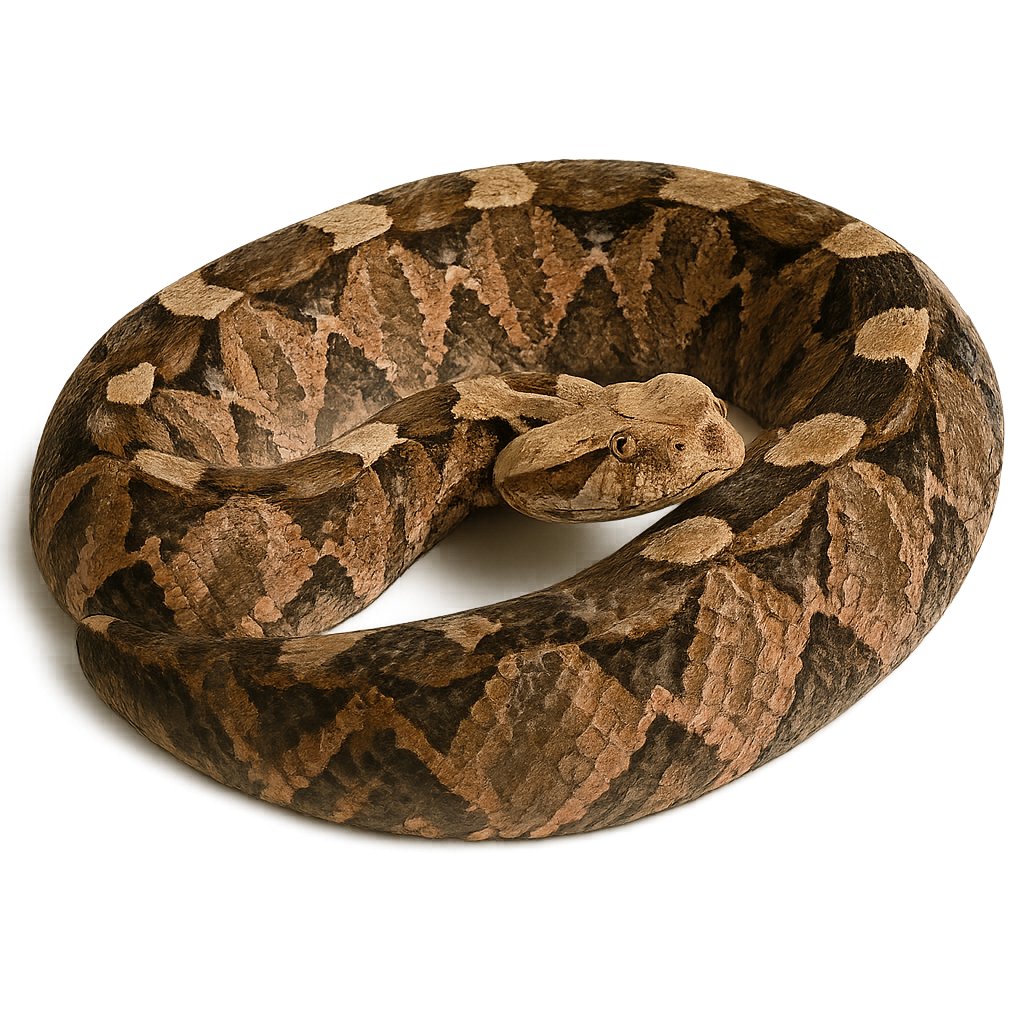Your wildlife photography guide.
Explore the gaboon viper in detail, study its behavior, prepare your shots.
Where to observe and photograph the gaboon viper in the wild
Learn where and when to spot the gaboon viper in the wild, how to identify the species based on distinctive features, and what natural environments it inhabits. The WildlifePhotographer app offers tailored photography tips that reflect the gaboon viper’s behavior, helping you capture better wildlife images. Explore the full species profile for key information including description, habitat, active periods, and approach techniques.
Gaboon viper
Scientific name: Bitis gabonica

IUCN Status: Least Concern
Family: VIPERIDAE
Group: Reptiles
Sensitivity to human approach: Tolerant
Minimum approach distance: 5 m
Reproduction period: January to April
Incubation: 210 jours
Births: January to April
Habitat:
tropical forests, wooded savannas
Activity period :
Mainly active at night, generally discreet during the day.
Identification and description:
The Gaboon viper, Bitis gabonica, is a venomous snake known for its impressive size and striking appearance. It can grow up to two meters long and is renowned for its intricate color patterns that allow it to blend seamlessly into the leaf litter of its forest habitat. Its fangs are among the longest of any venomous snake, and its venom can be deadly to humans. Primarily nocturnal, it preys on small mammals, birds, and occasionally reptiles. Although feared, it is generally not aggressive and prefers to avoid confrontation. Its presence is an indicator of healthy African forest ecosystems.
Recommended lens:
400 mm – adjust based on distance, desired framing (portrait or habitat), and approach conditions.
Photography tips:
To photograph the Gaboon viper, it's essential to maintain a safe distance of at least 5 meters. Use a telephoto lens of 400mm or more to capture detailed images without disturbing the animal. Look for it in tropical forests or wooded savannas, where it camouflages among the leaf litter. Be patient and attentive to the distinctive patterns of its skin. Natural morning or evening light can provide ideal conditions for stunning photos.
The WildlifePhotographer App is coming soon!
Be the first to explore the best nature spots, track rutting seasons, log your observations, and observe more wildlife.
Already 1 439 wildlife lovers subscribed worldwide

